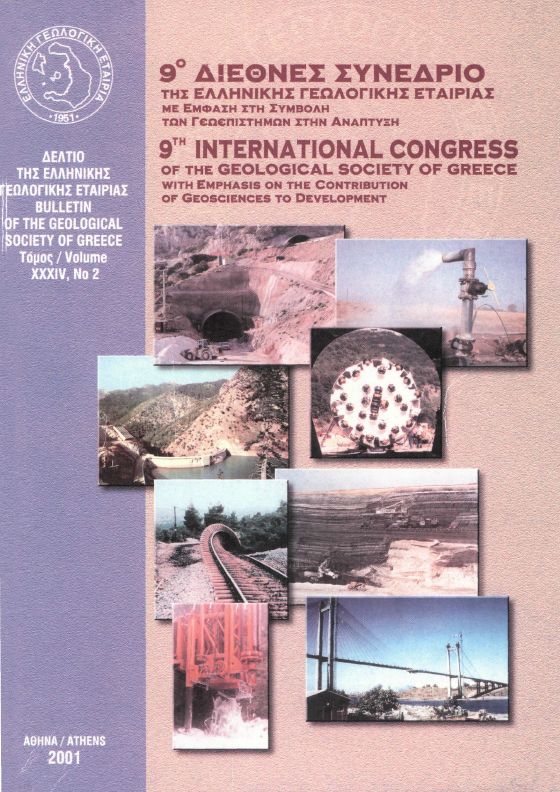GEOLOGICAL CONTROLS ON INTACT ROCK STRENGTH. THE EFFECT OF ANISOTROPY
Abstract
The factors that influence the strength and deformation of the intact rock are the mineral composition, the fabric, the grain size and the degree of alteration and weathering. Anisotropy is a characteristic of intact foliated metamorphic rocks (slates, gneisses, phyllites, schists). The current paper deals with the pronounced effect of the fabric of anisotropic rocks on the strength and deformation characteristics of intact rocks. It is part of ongoing research in the Department of Geotechnical Engineering, National Technical University of Athens. Testing was used to establish the anisotropic behaviour of selected metamorphic rocks. The effect of anisotropy on various mechanical properties (strength, deformation) and dynamic properties (wave velocity) was examined. The degree of strength anisotropy of these rocks can be indirectly estimated, by wave propagation through the rock, and thus they can be classified by means of geological and geotechnical indexes.
Article Details
- How to Cite
-
Σαρόγλου χ., Μαρίνος Π., & Τσιαμπάος Γ. (2004). GEOLOGICAL CONTROLS ON INTACT ROCK STRENGTH. THE EFFECT OF ANISOTROPY. Bulletin of the Geological Society of Greece, 36(4), 1826–1832. https://doi.org/10.12681/bgsg.16653
- Section
- Engineering Geology, Hydrogeology, Urban Geology

This work is licensed under a Creative Commons Attribution-NonCommercial 4.0 International License.
Authors who publish with this journal agree to the following terms:
Authors retain copyright and grant the journal right of first publication with the work simultaneously licensed under a Creative Commons Attribution Non-Commercial License that allows others to share the work with an acknowledgement of the work's authorship and initial publication in this journal.
Authors are able to enter into separate, additional contractual arrangements for the non-exclusive distribution of the journal's published version of the work (e.g. post it to an institutional repository or publish it in a book), with an acknowledgement of its initial publication in this journal. Authors are permitted and encouraged to post their work online (preferably in institutional repositories or on their website) prior to and during the submission process, as it can lead to productive exchanges, as well as earlier and greater citation of published work.




